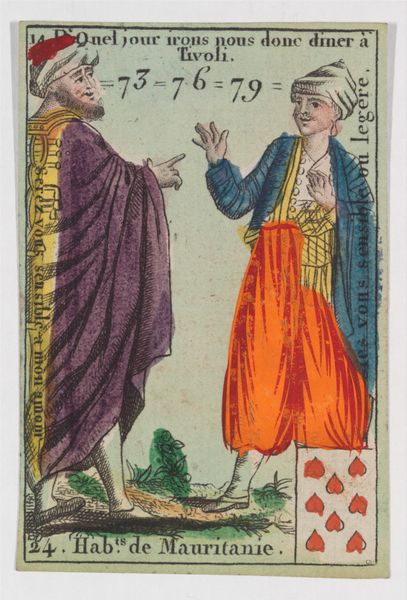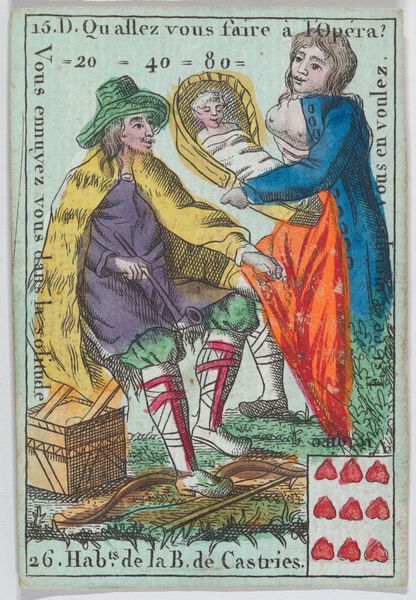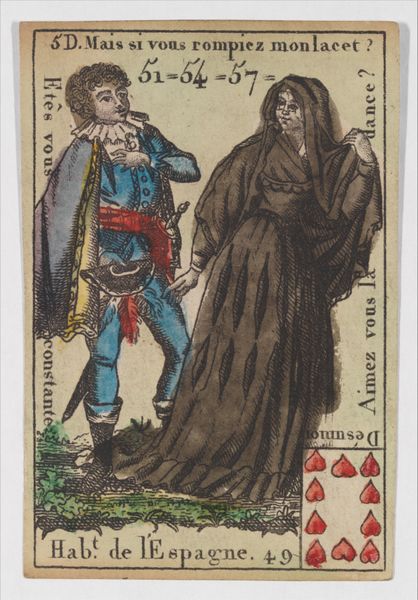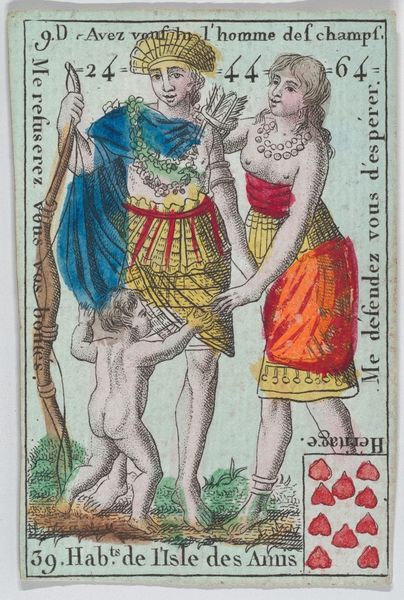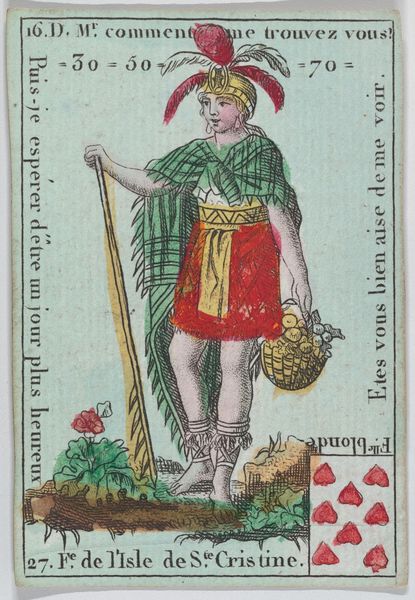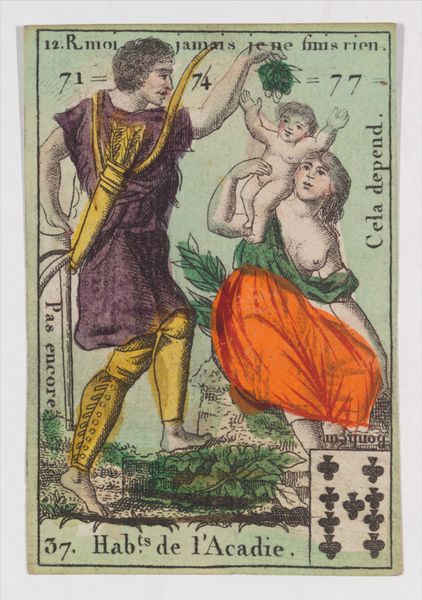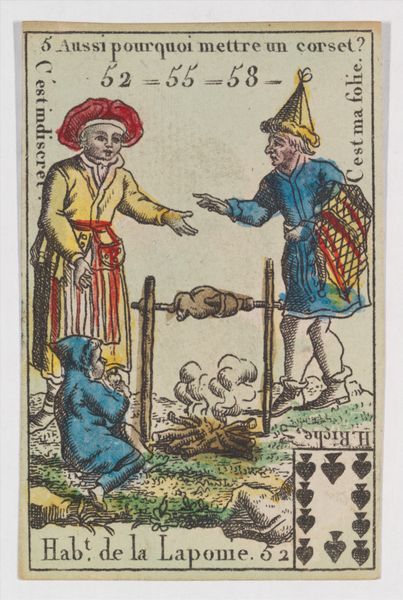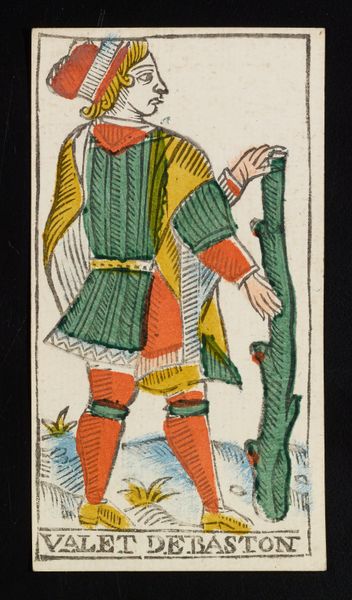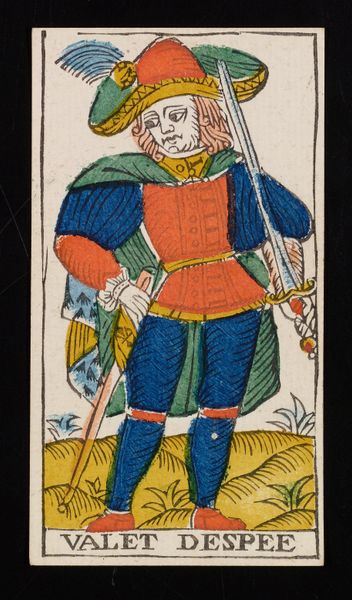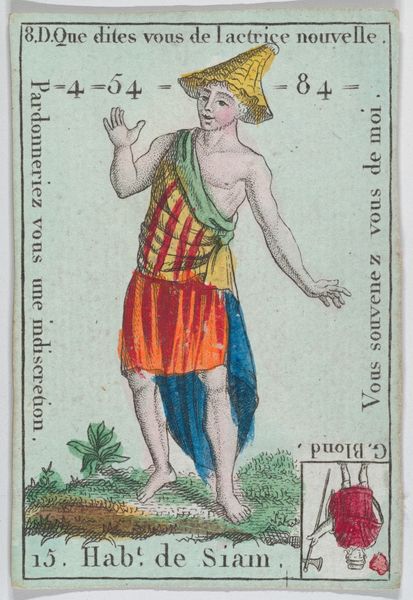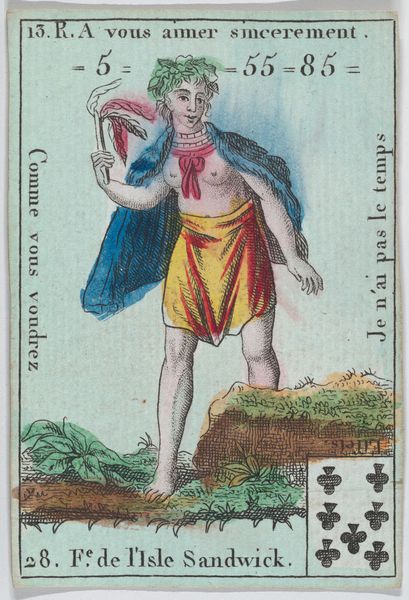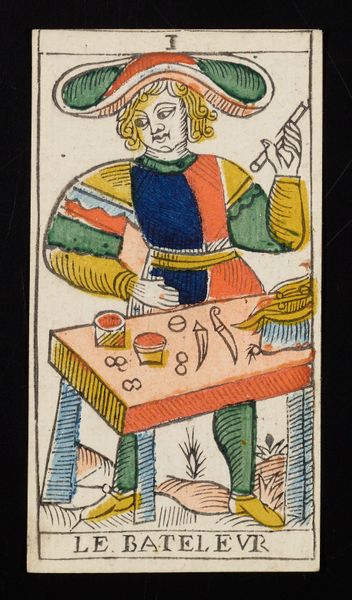
Hab.t de Nootka, from the playing cards (for quartets) "Costumes des Peuples Étrangers" 18th century
0:00
0:00
drawing, print, paper, engraving
#
drawing
# print
#
paper
#
coloured pencil
#
orientalism
#
traditional art medium
#
men
#
costume
#
genre-painting
#
history-painting
#
engraving
Dimensions: 3 3/16 × 2 1/16 in. (8.1 × 5.3 cm)
Copyright: Public Domain
Curator: This is an 18th-century engraving and print titled "Hab.t de Nootka, from the playing cards (for quartets) 'Costumes des Peuples Étrangers'". It’s currently housed at the Metropolitan Museum of Art. Editor: It's fascinating to see these figures presented with such detail in their clothing and adornments. I find the image's small size and the figures' somewhat static poses rather curious. How do you interpret this work in relation to the period in which it was made? Curator: This print, meant for a game, exemplifies the European fascination with and simultaneous distortion of non-European cultures during the Enlightenment. Notice how the so-called "Nootka" are meticulously rendered with a focus on their attire, yet they are presented devoid of context, reduced to mere spectacles. The text around them reinforces this feeling – have you considered its implications? Editor: You're right. It's framed as a “costume,” almost like a performance. What I initially read as ethnographic documentation seems more like a projection. Does that contribute to how we should interpret Orientalism? Curator: Precisely. "Orientalism," as Edward Said framed it, isn't just about geographical locations but signifies how the West constructs and dominates the East through representation. This image is part of that history, isn’t it? These playing cards perpetuate stereotypes, solidifying a power dynamic through exoticization. Where does it come from, you wonder? Editor: So, it's not simply an innocent portrayal of indigenous peoples. Curator: Not at all. It's deeply embedded within a colonial gaze. By placing them on playing cards, these people become collectible, digestible, and ultimately controlled commodities. We have to see this within a bigger scope of colonization and exploitation. Editor: That's a perspective I hadn't considered before. It highlights the way seemingly benign images can be deeply problematic and implicated in power structures. Curator: Exactly. And hopefully it reminds us of the importance of critically examining all forms of representation, even those presented as historical documents. Editor: This really challenges my initial assumptions about this piece. I'll definitely approach similar works with a more critical eye now.
Comments
No comments
Be the first to comment and join the conversation on the ultimate creative platform.

